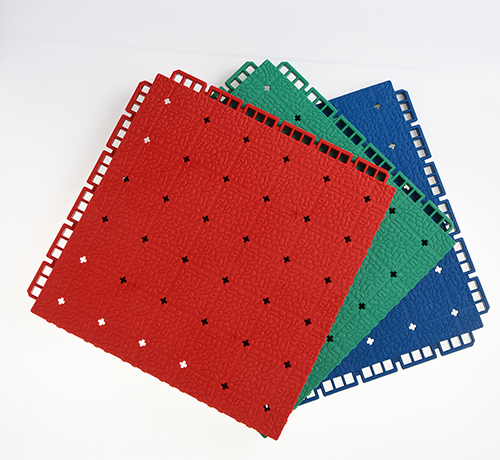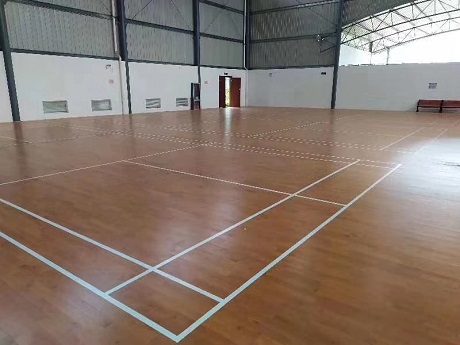2 月 . 10, 2025 21:34 Back to list
SES cushion tiles-S800 basketball court tiles
Outdoor basketball courts serve as essential venues bringing communities together through sports and recreation. Selecting the right surface for an outdoor basketball court is crucial for ensuring safety, performance, and durability. Here, we delve into the different types of outdoor basketball court surfaces, highlighting their benefits, challenges, and considerations when choosing the best fit for your needs.
- Rubberized Surfaces Rubberized surfaces, typically composed of synthetic materials, are gaining popularity for their superior shock absorption and comfortable playability. These surfaces significantly reduce the risk of injury by offering “give,” which is kinder to players' joints and lower extremities during jumps and quick maneuvers. They are also customizable in terms of color and design, enhancing both aesthetic appeal and game experience. Despite these advantages, rubberized surfaces can be more costly and may require more frequent maintenance compared to other materials, especially in harsh climates. - Modular Tile Surfaces Interlocking modular tiles provide a versatile and innovative solution for outdoor basketball courts. These tiles are made from high-impact polypropylene, allowing them to withstand intense gameplay and adverse weather conditions. They offer excellent drainage, reducing downtime after rainfall, and their built-in shock absorption minimizes injury risk. Modular tiles are convenient to install and replace, offering flexibility for temporary or changing layouts. Available in various colors and designs, these surfaces boost visual appeal while maintaining a high level of performance. Nevertheless, some players may need time to adjust to the unique feel of playing on a modular tile surface. Selecting the right surface for an outdoor basketball court requires careful consideration of factors such as climate, budget, expected use frequency, and maintenance capabilities. Each surface type offers distinct pros and cons, making it essential for planners to balance performance, safety, and longevity with available resources. Consulting with industry experts and reviewing case studies can provide valuable insights, ensuring that your court not only meets immediate functional needs but will also stand the test of time as a community recreational asset.


- Rubberized Surfaces Rubberized surfaces, typically composed of synthetic materials, are gaining popularity for their superior shock absorption and comfortable playability. These surfaces significantly reduce the risk of injury by offering “give,” which is kinder to players' joints and lower extremities during jumps and quick maneuvers. They are also customizable in terms of color and design, enhancing both aesthetic appeal and game experience. Despite these advantages, rubberized surfaces can be more costly and may require more frequent maintenance compared to other materials, especially in harsh climates. - Modular Tile Surfaces Interlocking modular tiles provide a versatile and innovative solution for outdoor basketball courts. These tiles are made from high-impact polypropylene, allowing them to withstand intense gameplay and adverse weather conditions. They offer excellent drainage, reducing downtime after rainfall, and their built-in shock absorption minimizes injury risk. Modular tiles are convenient to install and replace, offering flexibility for temporary or changing layouts. Available in various colors and designs, these surfaces boost visual appeal while maintaining a high level of performance. Nevertheless, some players may need time to adjust to the unique feel of playing on a modular tile surface. Selecting the right surface for an outdoor basketball court requires careful consideration of factors such as climate, budget, expected use frequency, and maintenance capabilities. Each surface type offers distinct pros and cons, making it essential for planners to balance performance, safety, and longevity with available resources. Consulting with industry experts and reviewing case studies can provide valuable insights, ensuring that your court not only meets immediate functional needs but will also stand the test of time as a community recreational asset.
Share:
Latest news
-
Custom Pickleball Court Solutions Convert Tennis & Indoor Builds
NewsMay.30,2025
-
Outdoor Pickleball Court Costs Build & Install Pricing Guide
NewsMay.30,2025
-
Premium Pickleball Sports Courts Custom Design & Installation
NewsMay.30,2025
-
Indoor Pickleball Courts Tennis Court Conversion & Custom Builds Tempe
NewsMay.29,2025
-
Professional Pickleball Court Installation & Tennis Court Conversions
NewsMay.29,2025
-
Grey Synthetic surface-rubber prefabricated track
NewsMar.07,2025

